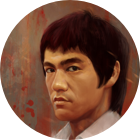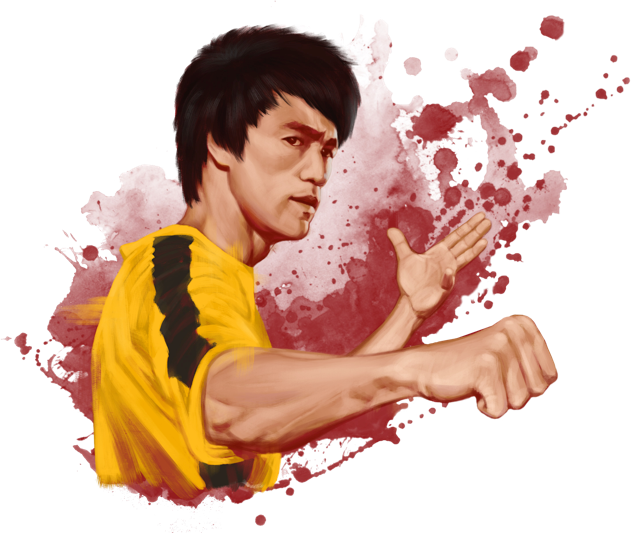
PORTRAIT OF A LEADER
Bruce Lee
The Competitive Leader
Bruce Lee expected and demanded more of himself than arguably any other human being in recent history. He had an unparalleled drive to develop his physical and mental capabilities, which resulted in the performance of super-human feats that have yet to be equaled to this day. Every individual to ever enter the industry he led, revered him, and often sought to emulate him. He became the benchmark and the standard against which all successful competitors of his industry would be compared against. To have this kind of impact on one’s industry is an extraordinary accomplishment—and if this alone was his greatest achievement, this leader would make for a fascinating leader to study. This leader’s influence, however, goes far beyond his profession. It spans across socio-economic barriers, ethnicity, and transcends his era. He died in the 20th century, yet, in the 21st century, musicians, world-class athletes, film directors, actors, philosophers, professional fighters, dancers, artists, business and civic leaders have cited him as a significant influence on their lives. More than three decades after his death, he is heralded as a cultural-icon who continues to inspire. Born in San Francisco, in the Year of the Dragon, Bruce Jun Fan Lee lived a short life spanning only thirty-two years, yet he leaves an impressive legacy. Bruce made significant contributions to the world as a skilled martial artist, philosopher, writer, teacher, actor, film director, and screenwriter.

Competitive Leaders are relentless in perfecting their techniques.
Bruce Lee was graceful in movement, which was displayed in fighting, and in films. (Bruce starred in five full-length feature films). His fellow students noted that Bruce’s kicks had a precision and speed that surpassed their instructors. It is not surprising that he was also a terrific dancer, (in 1958 he won the Hong Kong Cha-Cha Championship). Whether it was Kung-Fu or Cha-cha, he kept journals noting steps and techniques, as he diligently pursued perfection. Bruce was ruthlessly self-disciplined and relentlessly sought mastery in the martial arts. Bruce dedicated himself to a fitness and nutrition regimen that made him renowned for his strength and vigor. He also sought to develop his mental conditioning, and was therefore, well-read, (Bruce possessed an extensive library of philosophical writings). When he realized that the the martial arts traditions of his day were placing limits on him, he developed his own way of martial arts, which he called Jeet Kune Do, “The Way of the Intercepting Fist.” He wrote extensively about his thoughts on philosophy, combat, motivation, freedom, the psychology of fighting, and human potential.
Competitive Leaders have an instinct for taking the “conventional” and adapting them for results.
Before He created Jeet Kune Do, he called what he taught Jun Fan Gung Fu, which literally means, Bruce Lee’s Kung Fu. It was Bruce’s approach to Wing Chun. In perfecting his techniques in the Wing Chun tradition, he noted that the methods were too rigid, formalistic, and impractical for scenarios in real street combat. As he perfected his movements in an age-old tradition, he found that the art was far too limiting. Lee’s abandonment of tradition and his willingness to teach westerners was frowned upon by the establishment of the day, and he was issued a formal order, signed by the entire community of Kung-Fu leaders of Chinatown. He was challenged to a match with their top fighter, Wong Jack Man, and the agreement was that if Bruce was defeated, he would abandon his teaching. Bruce said that the match lasted three minutes, yet, in whipping his opponent, he felt that the fight lasted too long. He expressed that he failed to live up to his potential using Wing Chun. This motivated him to develop and teach his own way. Bruce sought to create a system where “practicality, flexibility, speed, and efficiency” were the focus.
Competitive Leaders never back down; they are driven to win at all costs.
His mother often told the story of young Bruce at the age of four raising his fist to the Japanese invaders. He often got into fights with English boys who taunted them as a youngster. And in his teen years, Bruce was often known to get into street fights with gangs. With his training in Kung-Fu, he used his skills to pummel any foe. In whatever Bruce pursued, he was fearless. He sought to dominate; to be the best. Being a minority in the United States during the 1960s, he had to breakdown ethnic barriers. Asians were not visible in American life. In Hollywood, lead film roles for Asians were essentially non-existent. Bruce was the first non-white role model, that was not meek and submissive. He was a fierce competitor who redefined cool. He was internally driven, to develop and teach his own way. He used competition as his drive, having his own expectations for himself, which far surpassed what was possible for normal human beings. Whether it was beating up someone, a demonstration of his strength and skill (like his two finger pushup or one-inch punch), or starring in legendary films, Bruce performed feats which were far beyond anyone’s wildest imaginations.
Competitive Leaders work harder and longer than anybody else to achieve their goals.
Chuck Norris stated, “Lee, pound for pound, might well have been one of the strongest men in the world, and certainly one of the quickest.” Bruce believed that, “Training is one of the most neglected phases of athletics.” He claimed that, “Too much time is given to the development of skill and too little to the development of the individual for participation.” He said of the martial art he created, “Jeet Kune Do, ultimately is not a matter of petty techniques but of highly developed spirituality and physique.” Bruce developed his own training routine, which included exercises lasting more than 3-hours daily. He took muscular strength training, cardiovascular endurance, and flexibility exercises to a whole new level, and he often went to extremes. For example, Lee did exercises to even toughen the skin on his fists, by thrusting his hands into buckets of harsh rocks and gravel over 500 times a day. Even outside of the gym, in the classroom, he applied himself with a tenacity to learn. Discontented with speaking like a foreigner, he applied himself to learn idiosyncrasies in colloquial English. Bruce did whatever it took to hit his targets.
Competitive Leaders rely on their practiced instincts to guide them moment by moment.
When Bruce came to America, he came with $100.00 in his pocket. In order to make money, he started off as a dance instructor. He simply leveraged his many years of practice in dance to get started in his new homeland. America was the place where he could give birth to a system that brought together all that he had practiced up until then. Bruce was trained in a wide range of arts, including multiple forms of Chinese martial arts, Jujitsu, Western Boxing, and Épée fencing, to name some. Although he was formally trained in so many traditions, he emphasized what he referred to as, “the style of no style.” It was a statement which meant that he wanted to get rid of a formalized approach that is indicative of traditional styles. Though Bruce lived a very short life, he never wasted a moment. Whether it be reading while resting between sets during a workout, working on choreography for a film while starring in it, or mastering a technique for combat, he was always doing something. He knew how to leverage all of his experiences. As a child, Bruce starred in various films, and this allowed him to pursue a career on the big screen as an adult, where he starred in five legendary martial arts films. Bruce’s life is a moment by moment manifestation of everything coming together. All that he practiced throughout life served as preparation for every opportunity that he seized in the future. Bruce once said, “The key to immortality is first living a life worth remembering.” He certainly lived up to his words.
